Contents
Among the variety of cultivated flowering plants, it is difficult to find something as unpretentious and decorative as lavater. Bright or soft pastel flowers can be used to make any arrangements in the garden.
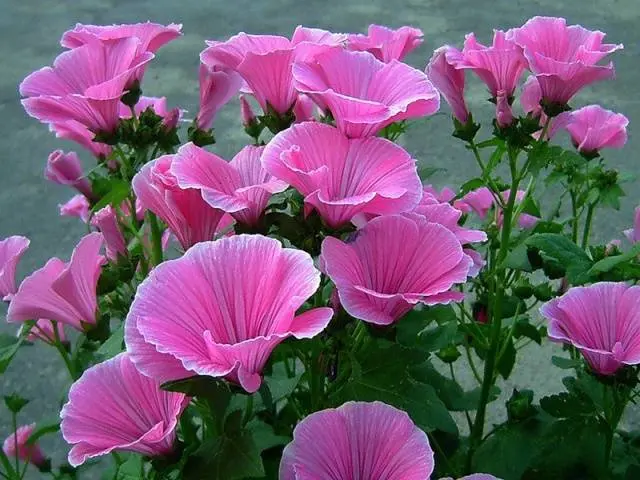
Description
Lavatera three-month-old or, as it is also called, a garden rose, is used to decorate any area, including shaded ones. Small lavatera bushes look very impressive in composition with tall plants, for example, with gladioli or park roses. Lavater is often used to create country-style flower beds.
The main advantages of lavater:
- High decorative effect;
- Abundant and long flowering;
- Weather resistance;
- Undemanding to the soil;
- Shade tolerance;
- drought resistance;
- Resistance to fungal diseases.
Lavatera blooms profusely from early summer until frost. Lavater flowers are most decorative in August, in hot weather their color becomes more intense.
Characterization
An annual plant. The flowers are simple, large, funnel-shaped, with contrasting venation. They can be white, pink, purple.
The leaves of the lavater are dark green, carved, pubescent, retain their decorative effect for a long time.
A bush of tall flowers reaches 1 meter, often needs support. Low-growing varieties have a height of no more than 50 cm, form a compact bush.
Flowers die at a temperature of -5 degrees.

Landing
Any site is suitable for planting a lavater, except for a place where water stagnates after heavy rainfall. The roots of lavater do not tolerate excess moisture. Any soil is also suitable for these flowers, even with high acidity, but lavatera flowers develop best on light, fertilized soil.
If possible, before planting flowers, lavaters dig up the soil, adding humus, sand, ash and a complex of nutrients. Humus must be added 2 – 3 liters per square meter, sand and ash are added in equal proportions, depending on the type of soil. Mineral fertilizers for flowers are applied according to the instructions.
They have good germination, but quickly lose their ability to germinate. It is impossible to get friendly seedlings from three-year-old seeds.
Seeds of these flowers can be sown directly into the ground or planted through seedlings. Grown through seedlings, flowers bloom much earlier.
Lavater seeds begin sowing when the soil temperature warms up to 15 – 18 degrees. As a rule, in most regions this is the middle or the end of April. In the prepared soil, holes are made up to 4 cm deep. The distance between the holes should be at least 25 cm; in thickened plantings, the lavater blooms poorly. One or two seeds of a garden rose are sown in each hole, after germination they leave one of the strongest flowers.
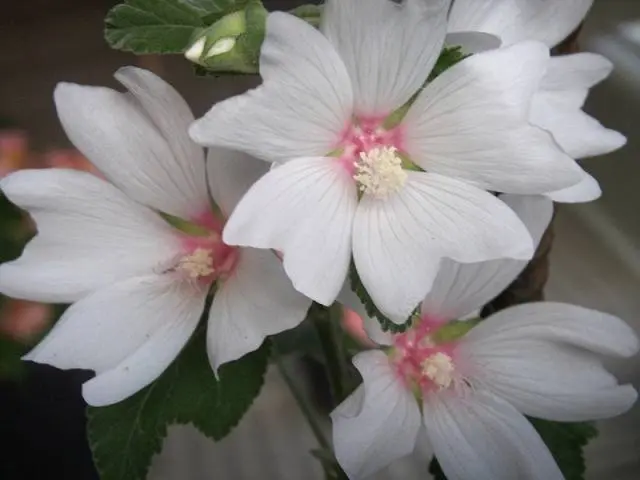
After 2 weeks, the first shoots of garden rose flowers appear. They are very sensitive to low temperatures, so it is advisable to cover the flower sprouts at night to avoid freezing. Seedlings of these flowers do not require special care, they only need timely watering and, if necessary, weeding.
Grow lavater through seedlings begin in mid-March. Each seed is preferably planted in a separate cup. Then, during transplantation, the root system is less injured.
1 – 2 seeds of a garden rose are placed in a glass with the prepared soil mixture, the soil is moistened with a spray gun. Planting depth – up to 3 cm. Cups with flower seeds must be covered with a transparent material until germination. After the appearance of the first shoots of a garden rose, the shelter is removed.
For full development, lavatera seedlings need a lot of light, the air temperature should be about 20 degrees.
Monthly seedlings of flowers can be planted outdoors when the threat of frost has passed.
Care
Care for an adult lavater consists of watering when necessary, weeding and fertilizing.
Lavater should be watered carefully, even in the heat, watering once a week is enough for it. The topsoil must be allowed to dry out between waterings.
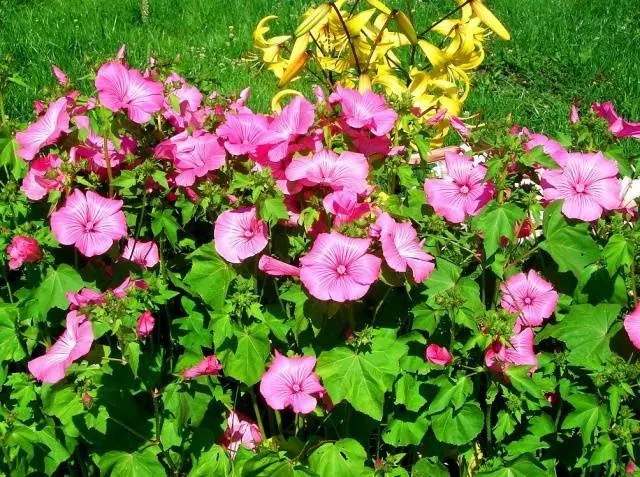
Weed the lavater if necessary. To avoid this unpleasant procedure, the soil between the lavatera bushes can be covered with a layer of mulching material. You need a cover that allows air to pass through. The following materials are recommended:
- Black agrofibre;
- chopped hay;
- Humus;
- Sawdust;
- Mowed grass.
It is undesirable to use a black film for mulching a garden rose, the soil under it does not dry out well, the roots of the lavater can rot.
Fertilization for growing garden roses is necessary only for very depleted soils, as a rule, the nutrients added to the plant when planting flowers are enough for the whole season. If fertilizers were not applied when planting a garden rose, complex water-soluble fertilizers can be added when watering.
Adult lavatera is very rarely affected by fungal or bacterial diseases. But occasionally planting garden roses can become infected with rust. To cure the flowers, it is necessary to remove the affected leaves and treat the flowers with fungicides.
Lavater varieties
There are many varieties of garden roses. Below is a description and photo of the most popular varieties of garden roses.
Lavater variety “Pink beauty”
The variety is tall, can grow up to 90 cm, abundantly covered with bright pink buds with contrasting dark veins. Used for group plantings, as a tapeworm, requires a garter.
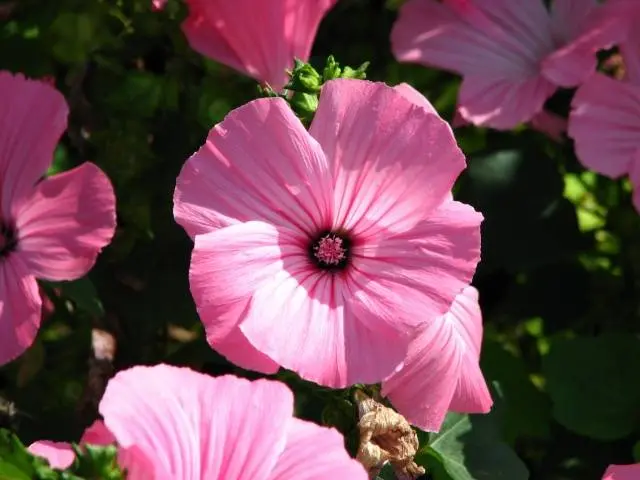
Variety lavatery “Mont Blanc”
The bush is medium, up to 75 cm, abundantly leafy. Flowers numerous, large, white, without veins. Can be used in group plantings to create a hedge. Does not require a garter.
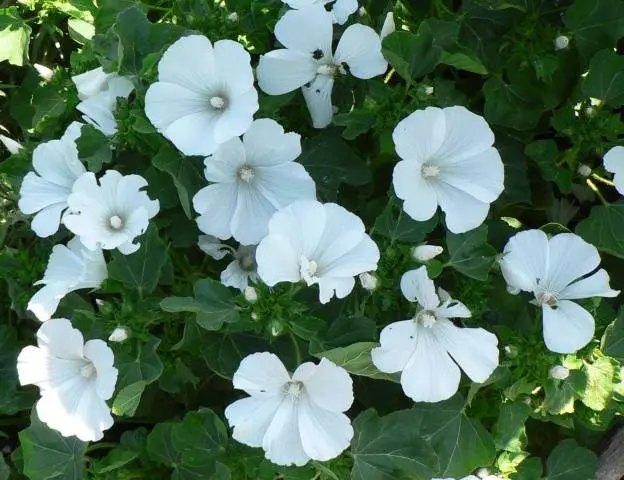
Lavater variety “Parade”
The bush is medium, grows up to 75 cm, plentifully covered with medium-sized flowers. On one bush, pink buds of various shades can bloom – from bright pink to almost white, with dark veins. Looks spectacular in the foreground of a flower arrangement. Doesn’t need supports.
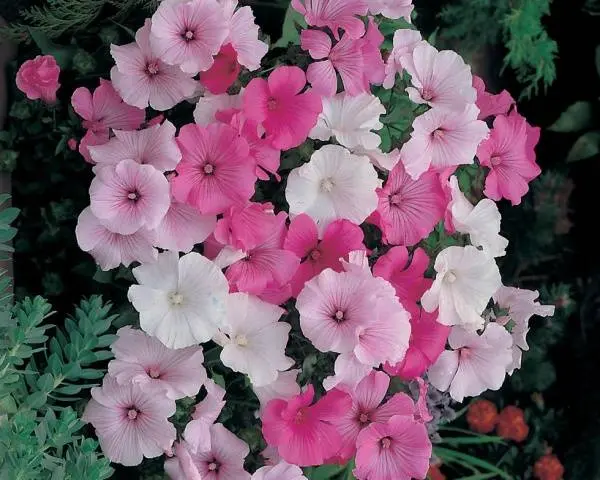
Variety Lavatera “Tanagra”
Low bush, up to 50 cm. Flowers are large, numerous, bright pink. Can be used to create borders, edging tall tapeworms.
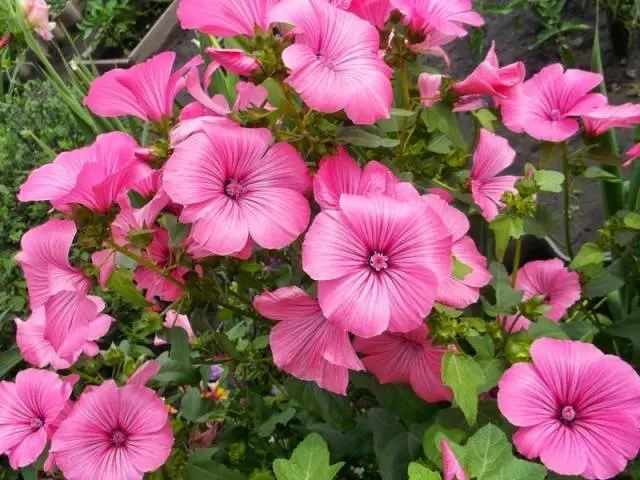
To sum up
Planting a lavater and caring for it will not take much effort and time, if you carefully select plants for a flower arrangement, you can decorate your site on your own no worse than professional designers would do.









